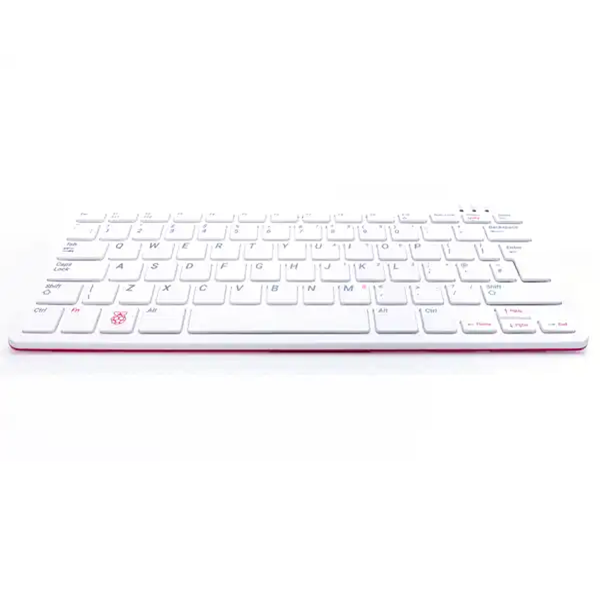Raspberry Pi 400 is a unique addition to the Raspberry Pi family, combining the capabilities of the Raspberry Pi 4 Model B into an all-in-one personal computer keyboard. Here are some key details:

- Form Factor: The Raspberry Pi 400 is designed as a complete computer in a keyboard form factor, making it incredibly compact and portable. It measures approximately 286mm x 122mm x 23mm.
- Processor: It incorporates the same Broadcom BCM2711 quad-core 64-bit ARM Cortex-A72 processor as the Raspberry Pi 4 Model B, clocked at 1.8GHz, providing high performance for a wide range of applications.
- Memory: Comes with 4GB of LPDDR4 SDRAM, offering ample memory for multitasking and demanding applications.
- Wireless Connectivity:
- Dual-band 802.11ac Wireless LAN (WLAN), supporting both 2.4GHz and 5GHz bands for fast and reliable internet access.
- Bluetooth 5.0 with BLE, enabling efficient communication with wireless peripherals.
- I/O Interfaces:
- Built into the keyboard:
- A USB-C port for power input, supporting up to 3A.
- Two USB 3.0 ports and one USB 2.0 port for connecting peripherals.
- A full-size HDMI port capable of 4Kp60 resolution output.
- A 3.5mm audio jack for sound output.
- A Gigabit Ethernet port (PoE not included in this model).
- A microSD card slot for storage.
- Additional ports and GPIO:
- A GPIO breakout board (not included with the keyboard) provides access to 40 GPIO pins, allowing for hardware expansion and interfacing.
- Built into the keyboard:
- Storage: Uses a microSD card for the operating system and data storage, with improved support for larger capacity cards.
- Power: Requires a 5V/3A power supply via the USB-C port.
- Price: Priced slightly higher than the Raspberry Pi 4 Model B, reflecting its unique all-in-one design and included keyboard.
- Usage:
- Education: An excellent tool for teaching computing, programming, and digital literacy in an all-in-one package that students can easily use and understand.
- DIY Projects: While not as accessible for hardware projects as standalone boards, it can still be used with additional hardware to create projects like retro gaming setups, media centers, and IoT devices.
- Personal Computing: Serves as a capable computer for everyday tasks, web browsing, office work, coding, and more, in a very portable form.
- Development: Ideal for developers who need a compact, portable computing solution for coding, software development, or as a secondary machine.
Advantages
- All-in-One Design: The Raspberry Pi 400 integrates everything into a single keyboard, reducing clutter and providing a complete computing solution out of the box.
- Performance: With the same processor as the Raspberry Pi 4, it offers excellent performance for its form factor.
- Portability: Its design makes it highly portable, perfect for on-the-go computing or as a secondary computer.
- Versatility: Can be used for education, development, or as a personal computer without the need for an additional keyboard.
Limitations
- Limited GPIO Access: While GPIO expansion is possible, it’s not as straightforward as with the standalone Raspberry Pi boards.
- No PoE: Unlike the Raspberry Pi 4 Model B, the 400 does not support Power over Ethernet without additional hardware.
- Cost: While still affordable, the all-in-one design and included keyboard increase the initial cost compared to buying a standalone Raspberry Pi.
The Raspberry Pi 400 represents a unique approach to the Raspberry Pi ecosystem, offering a blend of functionality, performance, and portability. It’s designed to make computing accessible, educational, and fun, while still maintaining the versatility and power that the Raspberry Pi is known for. This model is particularly appealing to educators, students, and anyone looking for an all-in-one computing solution with the flexibility of the Raspberry Pi platform.
Compliance
Raspberry Pi 400 has undergone extensive compliance testing and meets a number of regional and international standards.
View and download relevant certificates and conformity documents.
The Adopted Trademarks HDMI®, HDMI High-Definition Multimedia Interface, and the HDMI Logo are trademarks or registered trademarks of HDMI Licensing Administrator, Inc. in the United States and other countries.
